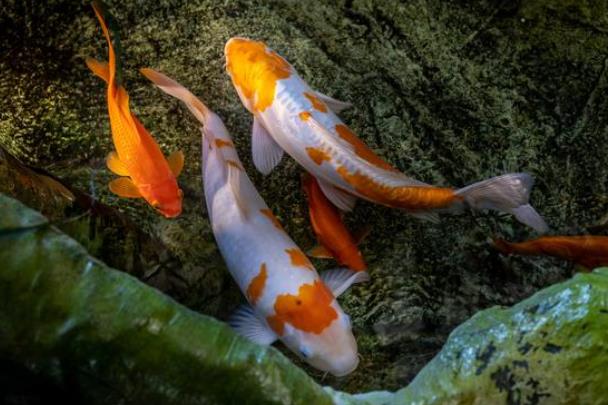Here are the key measures to ensure koi fish survive winter safely:

1. Temperature Control Essentials
Outdoor ponds must be at least 1.2 meters deep; in northern regions, 1.5 meters is recommended to keep the bottom water temperature stable at 4-6°C.
When the water surface freezes, drill ventilation holes 30cm in diameter—at least one hole per square meter to ensure proper oxygen exchange.
In southern regions, a 70cm water depth suffices, but monitor temperature changes closely during cold snaps.
2. Feeding Adjustment Strategies
When water temperature is 10-15°C, feed low-protein, easily digestible food 2-3 times a week.
Stop feeding entirely when temperatures drop below 10°C to avoid indigestion and enteritis.
Resume feeding gradually in spring: wait until water temperature rises above 10°C before starting with small portions.
3. Water Quality Management Standards
Replace no more than 1/4 of the water in winter, keeping the temperature difference between new and old water within 0.5°C.
Test pH levels and ammonia concentrations monthly, and use chlorine dioxide to prevent water mold.
Keep filters running to maintain water circulation, but reduce the frequency of water changes.
4. Special Protective Measures
Cover ponds with non-slip straw mats before heavy snow in northern regions to prevent koi from injuring themselves while jumping.
Insulate exposed pipes with thermal materials and install windbreaks on the north side of ponds.
Thoroughly clean pond bottom sludge and disinfect before winter sets in.
5. Health Monitoring Focus
If white fluffy mycelium appears on fish, treat immediately with methylene blue.
After overwintering, supplement with high-protein feed (≥40%) and vitamin E to help restore their condition.
Conduct a full health check in spring and clean the filtration system thoroughly.
